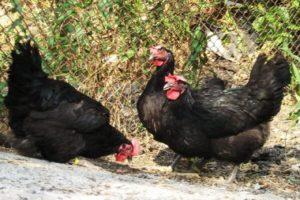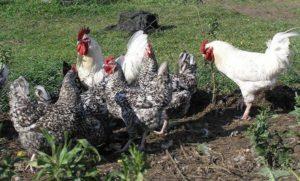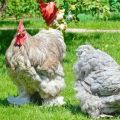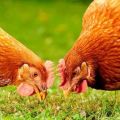Description and characteristics of the Shabo chicken breed, features of the content
Chickens of the dwarf type of the Japanese breed Shabo have been known in poultry farming since ancient times. For the first time from Japan, miniature chickens were brought to China at the beginning of the 17th century, representatives of the breed migrated to Europe only in the 19th century. A distinctive feature of the breed is short legs and curly plumage. Currently, Shabo are grown on private farms to obtain eggs and add decorative effect to the chicken herd.
Content
Description of the Shabo breed
The peculiarity of the breed, by which it is possible to unmistakably identify Shabo in the chicken community, is its short legs, contrasting with the powerful squat body. These decorative chickens lead an inactive lifestyle, are distinguished by a calm disposition and tolerance of congeners.
Exterior birds
Features of the appearance of chickens of the Japanese breed Shabo:
- short legs in contrast to the powerful body;
- small head with a small ridge hanging to the side;
- tail without braids;
- short back;
- wings touching the surface of the earth;
- color - combinations of various shades: from white to silver-black.
Short legs are the genetic standard for the breed. In color, golden, yellow is acceptable.
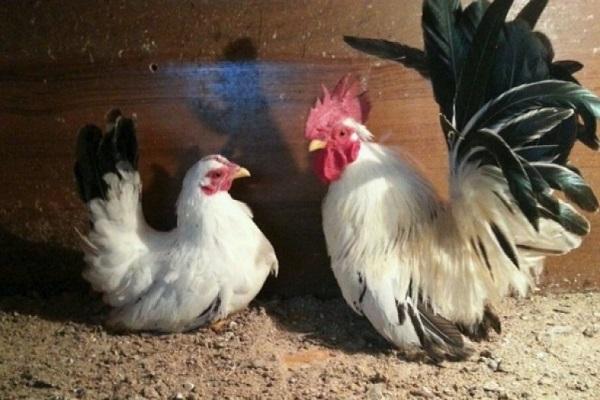
Kurochek
Distinguishing males and females, especially at a young age, is quite difficult. Females are smaller than males and weigh about 500 grams. Also on the tail of the hens there are no sharp feathers, the head of the females is smaller than the head of the rooster.
Petushkov
Males in a herd can be identified by their behavior, they are more active, seeking to protect chickens. In addition, males are noticeably larger, the chest of males is more powerful and wider, the tail is more magnificent, the wings are long and wide.
Temperament
Japanese decorative Shabo hens are known for their friendliness and highly developed herd instinct.
Shabo cannot be kept alone and in pairs, the chicken community must contain at least 10 individuals.
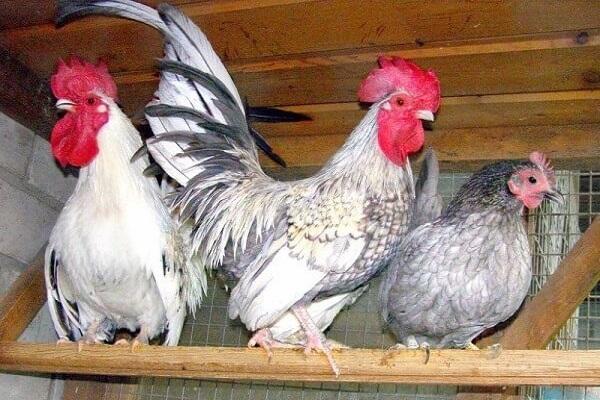
Females have a pronounced maternal instinct. Often farmers use Shabo brooders to hatch eggs of other breeds.
Due to their short legs, Shabo lead a sedentary lifestyle, the lifespan of miniature birds is short.
Productivity of chickens
For decorative chicken breeds, the productivity of Shabo is average, up to 85 eggs per year, with an average weight of one egg of 30 grams.
Pros and cons
The main advantages of the Asian breed of Shabo chickens include:
- docile, calm and friendly character;
- highly developed maternal instinct;
- small areas are used for walking;
- when growing, a small amount of feed is used.
Of the shortcomings, farmers single out:
- It is possible to keep in the herd together only with other miniature breeds of birds.
- The chicken community must consist of at least 10 layers and 1 rooster.
- Food should be of high quality and balanced.
- Short life expectancy.
- Average egg production and small egg size.
Shabo are beautiful decorative chickens suitable for growing in small private farms.
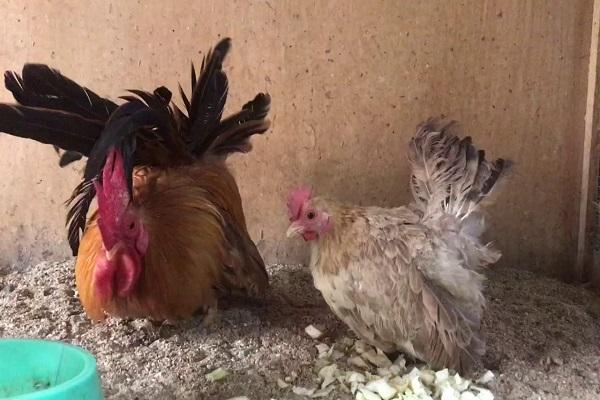
Features of the breed
In order for the birds to feel good, not to get sick, it is important to provide a stable thermal regime in the chicken coop, to create a microclimate. The room must be dry, well ventilated and free from drafts.
Climate and thermal conditions
Shabo is a thermophilic type of chickens; in rooms with low temperatures, birds often get sick and die. All walls, floor and ceiling in the chicken coop must be insulated. Optimum ambient temperature in the poultry house +18 FROM.
Straw and sawdust are used as bedding on the floor.
On a note! Foam plastic is not used as a material under the bedding, birds will begin to peck at it, which will disrupt their digestive system, and death will occur.
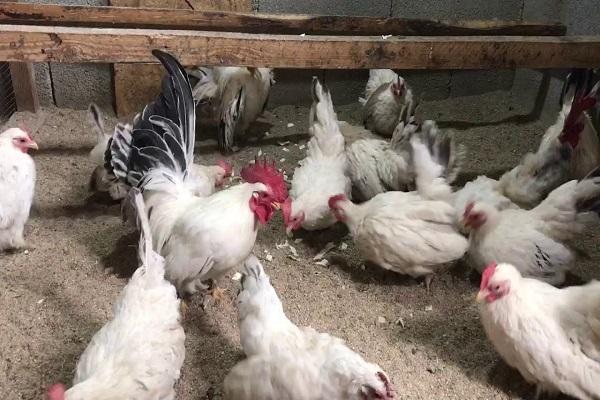
Arrangement of a chicken coop
Shabo spend the night on roosts, which must be installed in the house at a height of 130-150 centimeters. The length of the perch is 5 meters.
In a room with chickens, 2-3 nests are installed with straw bedding. Feeders and drinkers are placed in different parts of the house so that the hens do not mix feed residues with drinking water.
It is important to regularly clean the hen house, remove uneaten food in a timely manner, and change the water twice a day.
In the hen house, it is necessary to debug the air ventilation system, while there should be no drafts. The remains of feed from the feeders should be regularly removed; mold and dampness should not be allowed in the room with chickens.
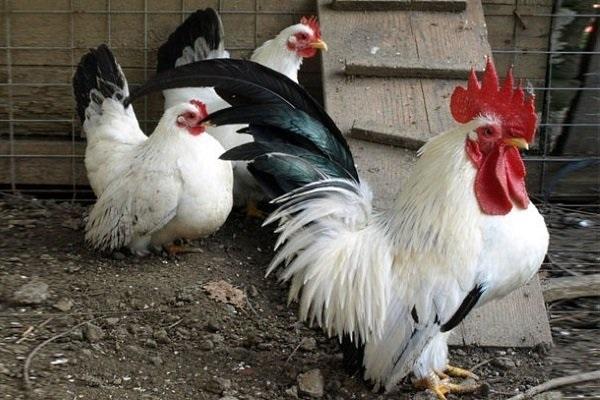
Walking
Despite the sedentary lifestyle, Shabo chickens love to walk. Walking for birds must be provided during the warm season. It has been noticed that egg production at this time increases, chickens are happy to pluck grass, dig worms and insects.
It is recommended to install a canopy over the walking area to protect the chickens from rain and bright sun on a hot day. In winter, Shabo does not walk, from low temperatures the bird gets sick and dies.

How to feed the birds?
They eat little shabo, but it is not recommended to save on feed quality. Birds need additional vitamins and minerals during molting, incubation of chicks.
Chicks
The diet of adult birds is different from that of chickens. It is recommended to feed young growth with the yolk of hard-boiled eggs; later, soaked wheat bran and rice flour, boiled vegetables are introduced.
At the age of 3 weeks, chalk, mineral additives are added to the food of chickens, and cottage cheese is additionally given.
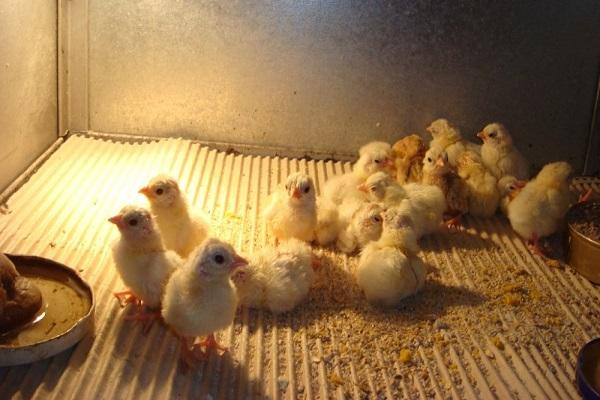
Adults
Shabo's standard diet:
- meat and bone meal;
- fresh chopped greens;
- corn;
- cottage cheese;
- corn;
- curdled milk with bran.
You can use specialized industrial feed for ornamental chicken breeds. It is imperative to have trays with a mixture of sand, eggshells and wood ash in the chicken coop. Birds peck up grains of sand, small pebbles that birds need for digestion.
Chickens should be provided with constant access to clean drinking water.
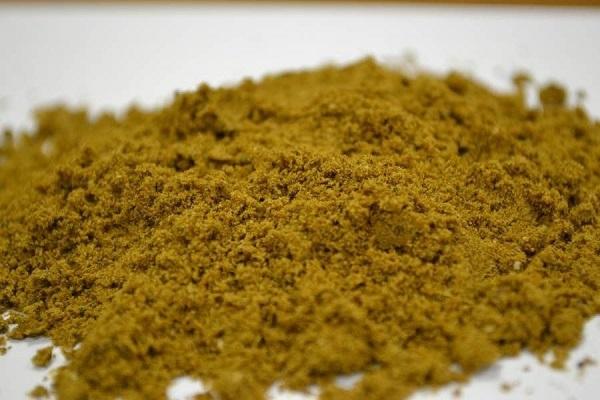
How to breed a breed
Young hens are ready for breeding at the age of 6 months. Strong, developed individuals with bright plumage and crest are selected for breeding.
Shabo hens are born hens that protect their offspring from the moment they hatch the eggs. Experienced farmers use this quality to nurture young stock of other chicken breeds, laying other people's eggs for laying hens.
One hen can lay about 5 eggs, chicks hatch small and weak. The mortality rate among young animals is 30%.
When choosing a pair for breeding, a little trick is used, the cockerel is chosen with longer legs than the female, or vice versa. It is noticed that Shabo offspring with too short legs turns out to be weak. It is necessary to renew and rejuvenate a flock of chickens every three years.

Possible diseases
The most common disease of Shabo miniature chickens is tuberculosis, followed by coccidiosis. In case of mass infection, it is necessary to completely destroy the livestock. Asian chickens have moderate immunity and can pick up various infections.
Experienced farmers recommend to vaccinate breeding birds, monitor the cleanliness and microclimate in the chicken coop, and promptly remove chickens with initial signs of illness or malaise from the house to quarantine.
Proper quality nutrition is the key to bird health. Chickens should not be overfed, but the birds should be provided with a vitamin feed without the addition of hormones and antibiotics.
